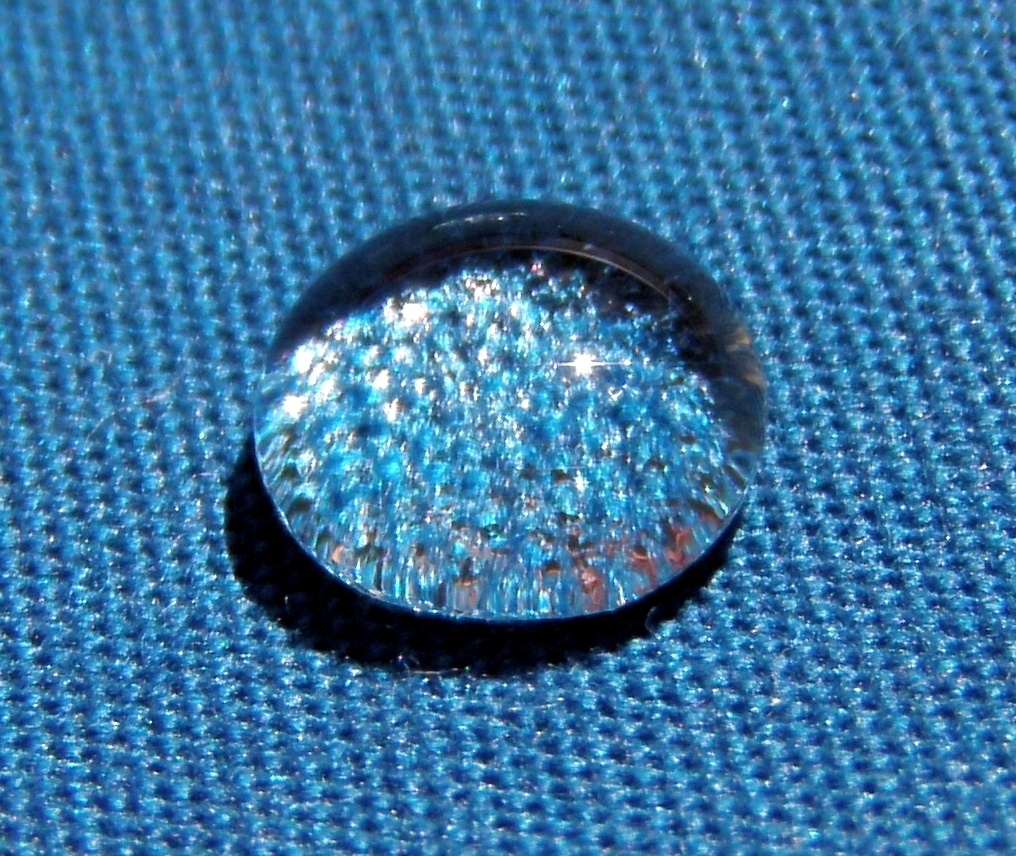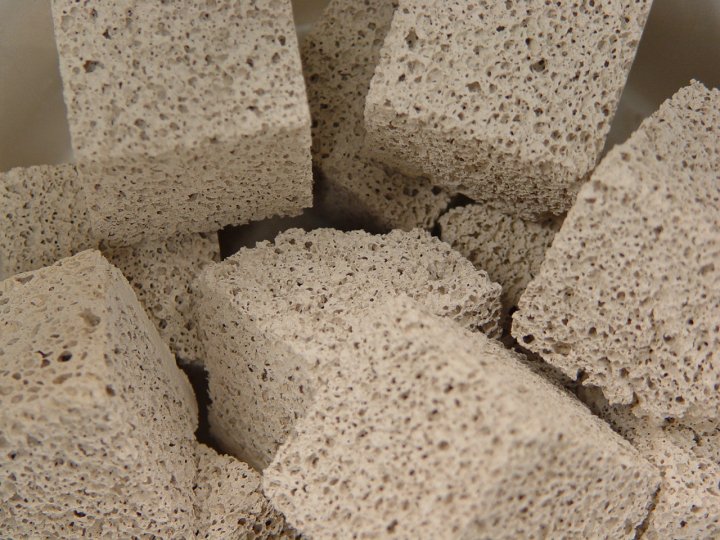|
Special Core Analysis
In the petroleum industry, special core analysis, often abbreviated SCAL or SPCAN, is a laboratory procedure for conducting flow experiments on core plugs taken from a petroleum reservoir. Special core analysis is distinguished from "routine (RCAL) or conventional (CCAL) core analysis" by adding more experiments, in particular including measurements of two-phase flow properties, determining relative permeability, capillary pressure, wettability Wetting is the ability of a liquid to maintain contact with a solid surface, resulting from intermolecular interactions when the two are brought together. This happens in presence of a gaseous phase or another liquid phase not miscible with ..., and electrical properties. Due to the time-consuming and costly character of SCAL measurements, routine core analysis (RCAL) data should be inspected thoroughly to select a representative subset of samples for SCAL. References Porous media Petroleum production {{fluiddynamics-stub ... [...More Info...] [...Related Items...] OR: [Wikipedia] [Google] [Baidu] |
Petroleum Industry
The petroleum industry, also known as the oil industry or the oil patch, includes the global processes of hydrocarbon exploration, exploration, extraction of petroleum, extraction, oil refinery, refining, Petroleum transport, transportation (often by oil tankers and pipeline transport, pipelines), and marketing of list of crude oil products, petroleum products. The largest volume products of the industry are fuel oil and gasoline (petrol). Petroleum is also the raw material for many petrochemical, chemical products, including pharmaceutical drug, pharmaceuticals, solvents, fertilizers, pesticides, synthetic Aroma compound, fragrances, and plastics. The industry is usually divided into three major components: upstream (petroleum industry), upstream, midstream, and downstream (petroleum industry), downstream. Upstream regards exploration and extraction of Petroleum, crude oil, midstream encompasses transportation and Oil terminal, storage of crude, and downstream concerns refining ... [...More Info...] [...Related Items...] OR: [Wikipedia] [Google] [Baidu] |
Core Sample
A core sample is a cylindrical section of (usually) a naturally-occurring substance. Most core samples are obtained by drilling with special drills into the substance, such as sediment or rock, with a hollow steel tube, called a core drill. The hole made for the core sample is called the "core hole". A variety of core samplers exist to sample different media under different conditions. More continue to be invented on a regular basis. In the coring process, the sample is pushed more or less intact into the tube. Removed from the tube in the laboratory, it is inspected and analyzed by different techniques and equipment depending on the type of data desired. Core samples can be taken to test the properties of manmade materials, such as concrete, ceramics, some metals and alloys, especially the softer ones. Core samples can also be taken of living things, including human beings, especially of a person's bones for microscopic examination to help diagnose diseases. Methods The co ... [...More Info...] [...Related Items...] OR: [Wikipedia] [Google] [Baidu] |
Petroleum Reservoir
A petroleum reservoir or oil and gas reservoir is a subsurface accumulation of hydrocarbons contained in porous or fractured rock formations. Such reservoirs form when kerogen (ancient plant matter) is created in surrounding rock by the presence of high heat and pressure in the Earth's crust. Petroleum reservoirs are broadly classified as ''conventional'' and '' unconventional'' reservoirs. In conventional reservoirs, the naturally occurring hydrocarbons, such as crude oil or natural gas, are trapped by overlying rock formations with lower permeability, while in unconventional reservoirs, the rocks have high porosity and low permeability, which keeps the hydrocarbons trapped in place, therefore not requiring a cap rock. Reservoirs are found using hydrocarbon exploration methods. Oil field An oil field is an area of accumulation of liquid oil underground in multiple (potentially linked) reservoirs, trapped as it rises by impermeable rock formations. In industrial terms, ... [...More Info...] [...Related Items...] OR: [Wikipedia] [Google] [Baidu] |
Multiphase Flow
In fluid mechanics, multiphase flow is the simultaneous flow of materials with two or more thermodynamic phases. Virtually all processing technologies from cavitating pumps and turbines to paper-making and the construction of plastics involve some form of multiphase flow. It is also prevalent in many natural phenomena. These phases may consist of one chemical component (e.g. flow of water and water vapour), or several different chemical components (e.g. flow of oil and water). A phase is classified as ''continuous'' if it occupies a continually connected region of space (as opposed to ''disperse'' if the phase occupies disconnected regions of space). The continuous phase may be either gaseous or a liquid. The disperse phase can consist of a solid, liquid or gas. Two general topologies can be identified: ''disperse'' flows and ''separated'' flows.'' ''The former consists of finite particles, drops or bubbles distributed within a continuous phase, whereas the latter consists of t ... [...More Info...] [...Related Items...] OR: [Wikipedia] [Google] [Baidu] |
Relative Permeability
In multiphase flow in porous media, the relative permeability of a phase is a dimensionless measure of the effective permeability of that phase. It is the ratio of the effective permeability of that phase to the absolute permeability. It can be viewed as an adaptation of Darcy's law to multiphase flow. For two-phase flow in porous media given steady-state conditions, we can write :q_i = -\frac \nabla P_i \qquad \text \quad i=1,2 where q_i is the flux, \nabla P_i is the pressure drop, \mu_i is the viscosity. The subscript i indicates that the parameters are for phase i. k_i is here the phase permeability (i.e., the effective permeability of phase i), as observed through the equation above. Relative permeability, k_, for phase i is then defined from k_i = k_k, as :k_ = k_i / k where k is the permeability of the porous medium in single-phase flow, i.e., the absolute permeability. Relative permeability must be between zero and one. In applications, relative permeability is of ... [...More Info...] [...Related Items...] OR: [Wikipedia] [Google] [Baidu] |
Capillary Pressure
In fluid statics, capillary pressure () is the pressure between two immiscible fluids in a thin tube (see capillary action), resulting from the interactions of forces between the fluids and solid walls of the tube. Capillary pressure can serve as both an opposing or driving force for fluid transport and is a significant property for research and industrial purposes (namely microfluidic design and oil extraction from porous rock). It is also observed in natural phenomena. Definition Capillary pressure is defined as: :p_c=p_-p_ where: :p_is the capillary pressure :p_ is the pressure of the non-wetting phase :p_ is the pressure of the wetting phase The wetting phase is identified by its ability to preferentially diffuse across the capillary walls before the non-wetting phase. The "wettability" of a fluid depends on its surface tension, the forces that drive a fluid's tendency to take up the minimal amount of space possible, and it is determined by the contact angle of the fluid.Fan ... [...More Info...] [...Related Items...] OR: [Wikipedia] [Google] [Baidu] |
Wettability
Wetting is the ability of a liquid to maintain contact with a solid surface, resulting from intermolecular interactions when the two are brought together. This happens in presence of a gaseous phase or another liquid phase not miscible with the first one. The degree of wetting (wettability) is determined by a force balance between adhesive and cohesive forces. Wetting is important in the bonding or adherence of two materials. Wetting and the surface forces that control wetting are also responsible for other related effects, including capillary effects. There are two types of wetting: non-reactive wetting and reactive wetting. Wetting deals with three phases of matter: gas, liquid, and solid. It is now a center of attention in nanotechnology and nanoscience studies due to the advent of many nanomaterials in the past two decades (e.g. graphene, Carbon nano tube, carbon nanotube, boron nitride nanomesh). Explanation Adhesive forces between a liquid and solid cause a li ... [...More Info...] [...Related Items...] OR: [Wikipedia] [Google] [Baidu] |
Porous Media
A porous medium or a porous material is a material containing pores (voids). The skeletal portion of the material is often called the "matrix" or "frame". The pores are typically filled with a fluid (liquid or gas). The skeletal material is usually a solid, but structures like foams are often also usefully analyzed using concept of porous media. A porous medium is most often characterised by its porosity. Other properties of the medium (e.g. permeability, tensile strength, electrical conductivity, tortuosity) can sometimes be derived from the respective properties of its constituents (solid matrix and fluid) and the media porosity and pores structure, but such a derivation is usually complex. Even the concept of porosity is only straightforward for a poroelastic medium. Often both the solid matrix and the pore network (also known as the pore space) are continuous, so as to form two interpenetrating continua such as in a sponge. However, there is also a concept of closed porosi ... [...More Info...] [...Related Items...] OR: [Wikipedia] [Google] [Baidu] |






